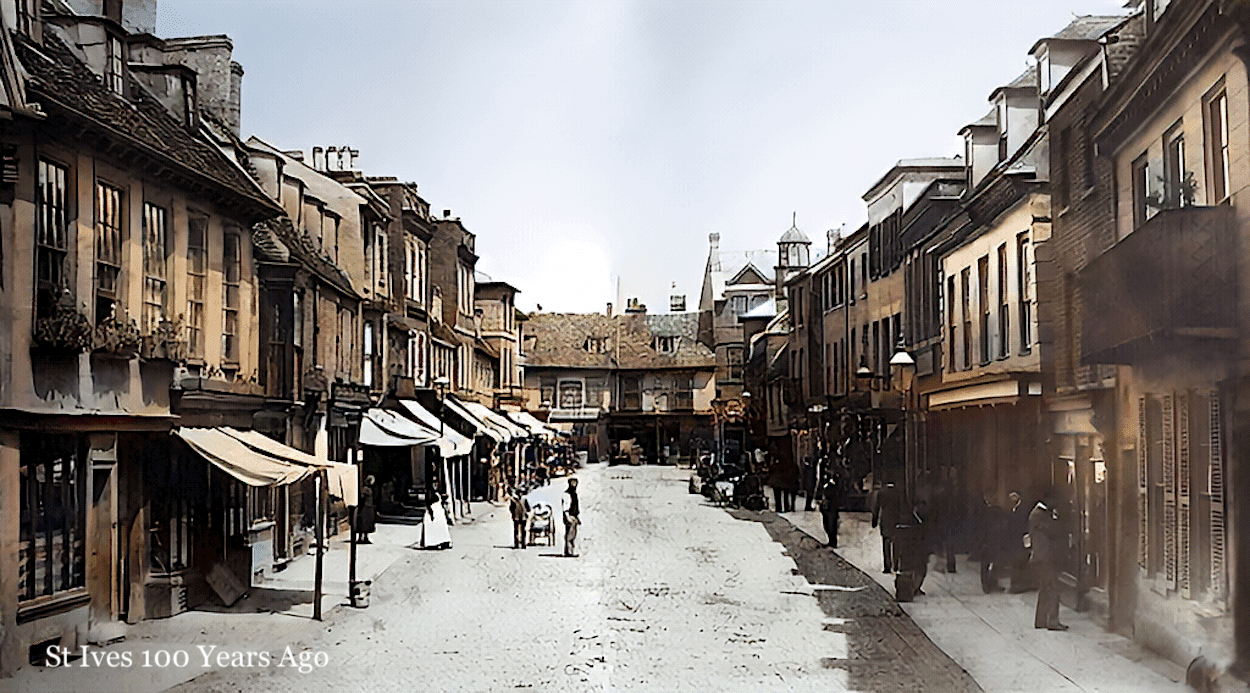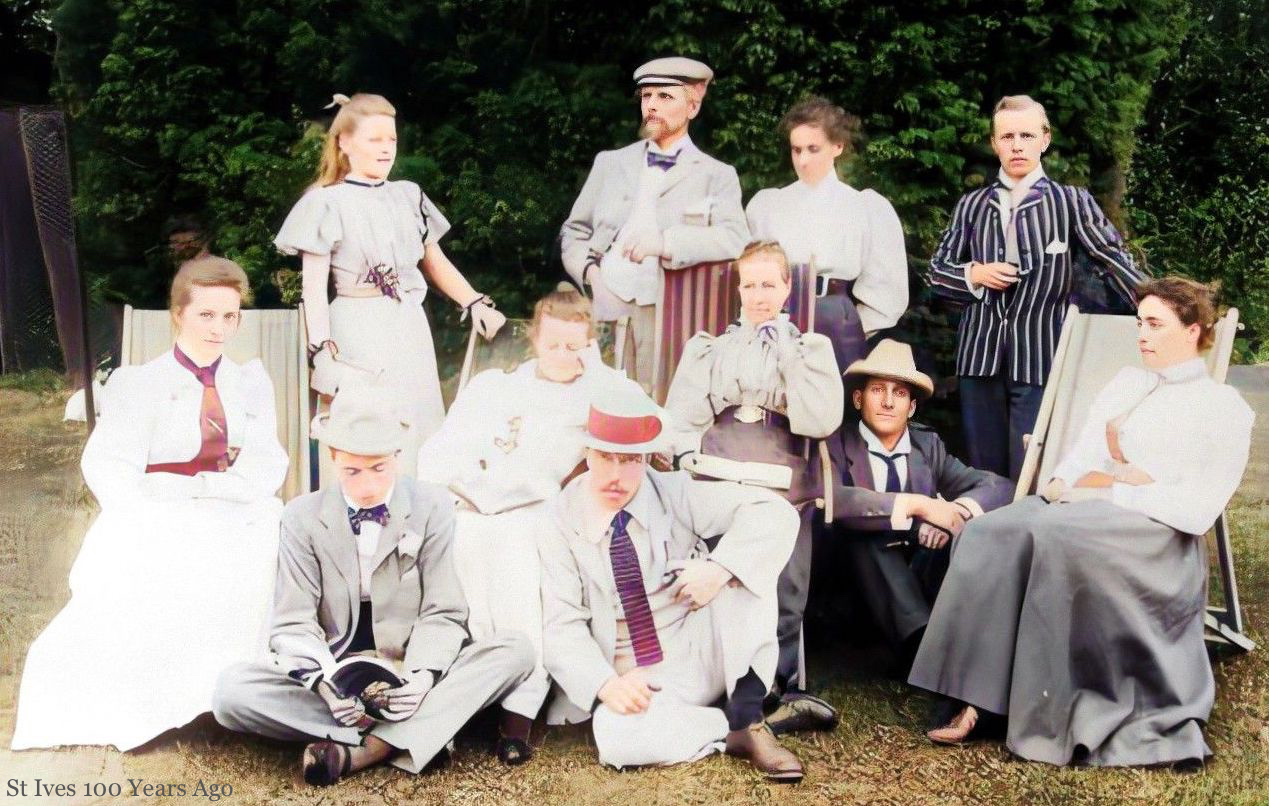The biggest surprise was that William Minson, one of the first owners of the house, was also from St Ives. Read on to learn about William's upbringing, his emigration and how he fared in New Zealand.
Early life
Born in Bluntisham in 1843, William's parents were unmarried. His father, also William, died when William was aged 10 years. His mother was Betsey Peaks, a dressmaker aged 20 years at William's birth. In 1851 William lived in Bluntisham with his mother, who called herself Betsey Minson, and grandmother.
The decade from 1861 was eventful for William. His mother died in 1863. He married Martha Pigott in 1865. Martha died the following year. In 1868 William married Mary Langford. Mary had the first of ten children.
Successful businessman
Most significantly, in that decade William transformed his prospects. In 1861 he worked as a 'shopman', living in Main Street, Somersham with his employer James Wiles, a grocer and draper. Later that year William moved to work for Frederick Marshall, tailor and hatter, Bridge Street, St Ives.
In 1865 William, aged 21 years, went into partnership with Lorenzo Pigott, possibly his first wife's uncle and William's senior by some 26 years. Lorenzo had a small tailoring business in Bridge Street, with a single employee. They traded as 'Pigott and Minson'.
They dissolved the partnership within a year (Cambridge Chronicle & Journal). Lorenzo went back to trading in his own name. William continued in business a few doors away in Bridge Street. Did Lorenzo, set in his ways, find it hard to work with the young and ambitious William?
William's business flourished. By 1871 he employed eleven staff. William caught one of his errand boys stealing a pair of gloves and braces, value two shillings and seven pence (today £15). When the case came up in court William did not press charges and employed the lad again (Cambridge Chronicle & Journal).
 |
| Bridge Street, St Ives, before 1900. |
Such was William's success, he had time to take up a hobby as a pigeon fancier. At the 1872 Hunts Agricultural Society Show William took both first and second in the category for the best pigeon collection of three different varieties, winning prize money of fifteen shillings, today £90.
He also stood for Municipal election in 1885. William came last out of five, a considerable surprise since he was popular and expected to top the poll. William took 'quite an independent course' during the election and refused to canvass the electors (Cambridge Independent Press). Elected to St Ives Town Council the following year, William was part of the committee responsible for building the new market in St Ives (Cambridge Independent Press). When proposed for Mayor, William turned down the offer saying he was 'not in a position to accept it'. He was also one of the townsmen who restarted the St Ives Cycling Club in 1889 (Cambridge Independent Press).
Fire was a constant hazard. Naked flames from candles, oil lamps and stoves combined with scraps of material in William's workshop were dangerous. In 1877 fire completely gutted the coach-house, stables and workshop William rented, with much of his stock lost (Cambridge Chronicle & Journal). He built a fireproof wall between the workshop and his accommodation. In 1887 this saved more extensive damage when another fire occurred. William's insurers covered the loss of stock amounting to £150, today £20,000 (Hunts County News).
These temporary setbacks left William undeterred. In 1889 he bought a 51 acre farm at Woodhurst with house and buildings for £820, today £108,000.
Emigration
In 1892 William, aged 49 years, sold up and emigrated to New Zealand (Cambridge Independant Press). A day's flight away today, William, his wife and three youngest family members faced a perilous seven week journey by sea.
They set sail on the Kaikoura on 14 October 1892 and arrived on 1 December 1892. One passenger was buried at sea and six others arrived in serious condition.
 |
| Kaikoura moored at Wellington, New Zealand. |
Within six days William wrote a letter to his son Arthur, living in London, confirming their safe arrival. Christchurch pleased him as a home. The climate is like that of St Ives. William was 'delighted' by Christchurch's grand buildings and splendid shops.
William already knew people in Christchurch. His first letter says on arrival, Arthur Rowell and the Hudsons offered accommodation. Within a fortnight they moved into rented premises. It wasn't long before William bought the villa in Opawa.
Back in business
In July 1893 William took over Hudson & Co at 220 Columbo Street, Christchurch (Lyttleton Times). He began trading as Minson & Co, importing household goods.
Soon newspaper adverts appeared offering discounts of four shillings in the pound for purchases over ten shillings, a 20% discount (Lyttleton Times). The company was also sole agent for the Davis vertical feed sewing machine.
 |
| Minson's Cheap Depot. |
Christmas the following year they billed themselves as 'Minson's Cheap Depot', selling Christmas cards and presents. The principle was to pile 'em high and sell 'em cheap (Lyttleton Times).
Civic duty
By 1900 William, aged 57 years, retired from business, taking a more active interest in local affairs. That year Canterbury celebrated the colony's fiftieth anniversary, commemorating the arrival of the first four ships in 1850. Christchurch held the Canterbury Jubilee Exhibition to show off local manufactured goods and produce. Visitors totalled 250,000. William was chairman of the Home Industries Committee, responsible for receiving and displaying the large number of exhibits.
 |
| The Minson family at the house in Opawa, Christchurch, in 1904. |
In 1906 the New Zealand International Exhibition opened in Christchurch, receiving two million visitors. William was again chairman of the Home Industries Committee.
Keen to encourage attendance by schoolchildren, William prepared for their board and lodgings whilst visiting the Exhibition. He planned a boarding house with accommodation for 500 school children. The Exhibition Commissioners were to pay William a subsidy £450 (today £56,000) for the construction. Presumably William could make up any difference in cost by selling the building when the Exhibition finished.
William subcontracted management to Frank Cook. On three occasions Cook refused accommodation to school children. The Commissioners refused to pay the subsidy to William. They claimed he did not have authority to subcontract, and barring accommodation to schoolchildren was a breach of contract. The judge found in Williams's favour (The Star).
Other roles William took on were President of the Canterbury Industrial Association and chairman of the Board of Conciliation, which arbitrated on the farm labourers' dispute in 1908. About then he became a Justice of the Peace.
William died in 1925 aged 82 years (New Zealand Times). He is buried in Linwood Cemetery, Christchurch, with his wife, who died in 1914.
To read more about St Ivians who settled worldwide, click Emigrants.
Thanks to Mick Shanley, Sarah Lilley, Tom Shanley, Donald Feist and the
Huntingdon Family History Society for material supporting this article.



Thomas George Hudson (Hudson and Co) was my great grandfather. He had been in partnership with James Mortlock, in the business Mortlock and Hudson. James passed away in 1885 after returning to England. James Mortlock was an old friend of William Minson, William was his executor and he later bought Mortlocks shares in the business.
ReplyDelete